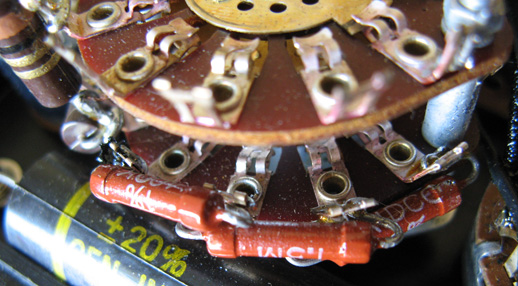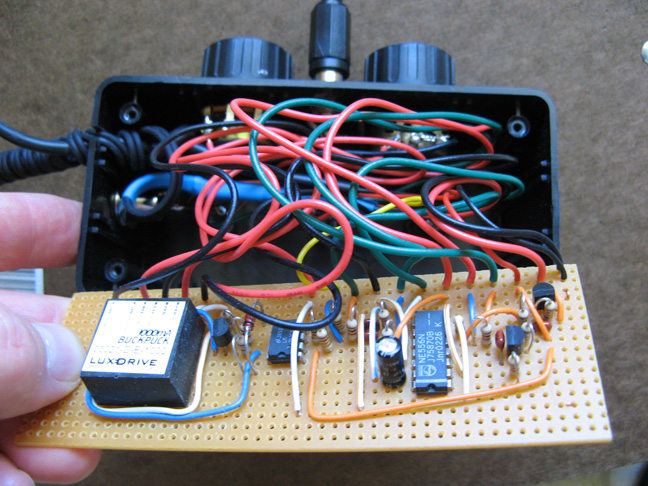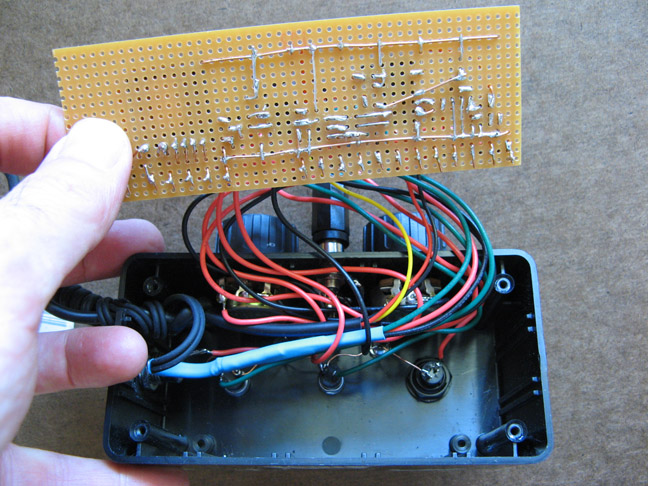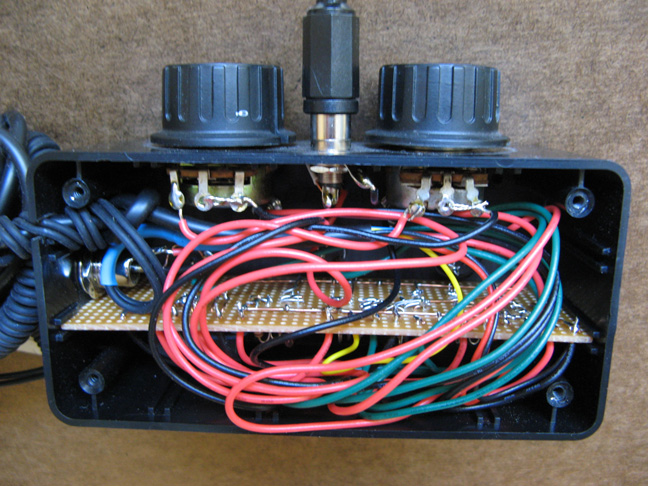Good to know I can count on my overseas buddies! Hey there, you're gorgeous!

Thanks NU, I had thought about that muffle/distance approach but with the limited space and all the other clutter on my 'table top', Charlie's control unit is just too tempting.
Hi Charlie, good to see you! Sorry to hear that you still haven't full access to your equipment again. But then, as long as you will appear in the right moment when I am in desperate need for advice, I think I can handle the hard time bereft of Krebs-manufactured eye-candy till late summer.

With both blueprints, yours together with the one Rik has sent me (Thanks again, Rik!), I get a good picture of what to buy and how to wire it up. Ah, fixed Rs that makes sense, I had already been wondering about the even spacing on the scale/dial of the two rotary switches.
Here's the shopping list I have compiled from the catalogue
1.
As for the Rs, they'd be available either as
"coal-layer-resistors" (Kohleschicht-Widerstände)
http://www.reichelt.de/?;ACTION=3;LA=3; ... d845160ee4
or "metal-layer-resistors" (Metallschicht-Widerstände
http://www.reichelt.de/?;ACTION=3;LA=44 ... d845160ee4
2.
the "Rotary Switch Shorting 1 Pole 12 Position Solder" that Charlie has shown above is a
"Stufen-Drehschalter 1 Pol 12 Stellungen Lötkontakt"
http://www.reichelt.de/?;ACTION=3;LA=44 ... ad3a9143e2
3.
for the spdt (single pole double-throw) toggle switch (jeez, boys you're teaching me weird vocabulary

)
I found this Sub-Miniatur-Schalter 1-polig, the triple Ein/Aus/Ein (On/Off/On), or I think I could take just the double Ein-Ein (On/On)
http://www.reichelt.de/?;ACTION=3;LA=3; ... ad3a9143e2
4.
Charlie's sketch above suggests a kind of board on which the parts are fixed. On what kind of board (circuit board or strip board (right word?)) should I solder the things together. I found these:
http://www.reichelt.de/?;ACTION=3;LA=44 ... d845160ee4
Or am I totally wrong with how the resistors get fixed and connected within the housing? There are Cu-ligaments (Do you read me?) inside some of such boards, and wholes where the wire ends of the resistors get plugged in, right?
Or should I get a nonconducting board, drill little wholes in that to place the resistors, solder them together and to the switches with enamel insulated Cu-wire, and eventually fix the loose wire with hot glue to the board?
And what kind of insulated Cu-wire of what diameter do I need to connect the parts? I found these clear enamel insulated Cu wires, that can be soldered:
http://www.reichelt.de/?;ACTION=3;LA=44 ... ad3a9143e2
5.
For the housing/box: estimating the size from the photo of Charlies box, I guess a 122 mmx 80 mm x 57 mm housing should do, like this one
http://www.reichelt.de/?ACTION=3;ARTICL ... ad3a9143e2
or this one with an aluminium lid in 110 mm x 70 mm x 49 mm
http://www.reichelt.de/?;ACTION=3;LA=44 ... ad3a9143e2
Sorry for the silly questions, the little bit of electronics I've learned, twas all theoretical, I never did something like this before in practice, but am looking forward to create such a device myself that hopefully will work and do a usefull job. Did I get anything wrong? Any suggestions on what kind of board I should solder the resistors together? And what size of board and housing I should take that I don't end up with a board of too small size where not all of the needed Rs fit on.
Thanks much again for your help, pals!
--Betty
 edit: fixed bad links to resistors
edit: and another one to the board
edit: fixed bad links to resistors
edit: and another one to the board





